
UNDER CONSTRUCTION The Canon R5 Review:
Sensor Noise, Thermal Noise, Dynamic Range, and Full Well Analysis
by Roger N. Clark
This review includes an analysis of noise, dynamic range, and full well
capacity of a Canon R5 camera. The Canon R5 a full-frame 45-megapixel
mirrorless camera. The performance is exceptional.
UNDER CONSTRUCTION
All images, text and data on this site are copyrighted.
They may not be used except by written permission from Roger N. Clark.
All rights reserved.
Contents
Introduction
Results: Canon R5 sensor analysis
Sensitivity
Fixed Pattern (Banding) Noise
Stacking Fixed Pattern (Banding) Noise
Dark Current and Thermal Noise
Autofocus Tracking Setup
Some Negatives
Conclusions
Final Comments
Appendix 1 Table A1: ISO 100 Sensor Data and Analysis
References/ Notes
Disclosure
Introduction
This review is under construction but the results are so fantastic,
I felt they should be released now. The low level uniformity sets
new standards compared to all other sensors that I have analyzed
or seen analyses for.
To better understand the technical details of this review, please see:
How to Interpret Digital Camera Sensor Reviews:
Sensor Noise, Thermal Noise, Dynamic Range, and Full Well Analysis .
If you find the information on this site useful and wish to purchase the equipment
that I use to make images, please use
the links to B&H Photo to make the purchases. By using the link, you will help support
clarkvision.com at no additional cost to you. I have used B&H Photo for decades and
have always had a great experience and their prices are very good.
Please support Clarkvision; make a donation (link below).
Canon EOS R5 Mirrorless Digital Camera
 Click here to go to B&H Photo and Purchase the Canon EOS R5 Camera.
Click here to go to B&H Photo and Purchase the Canon EOS R5 Camera.
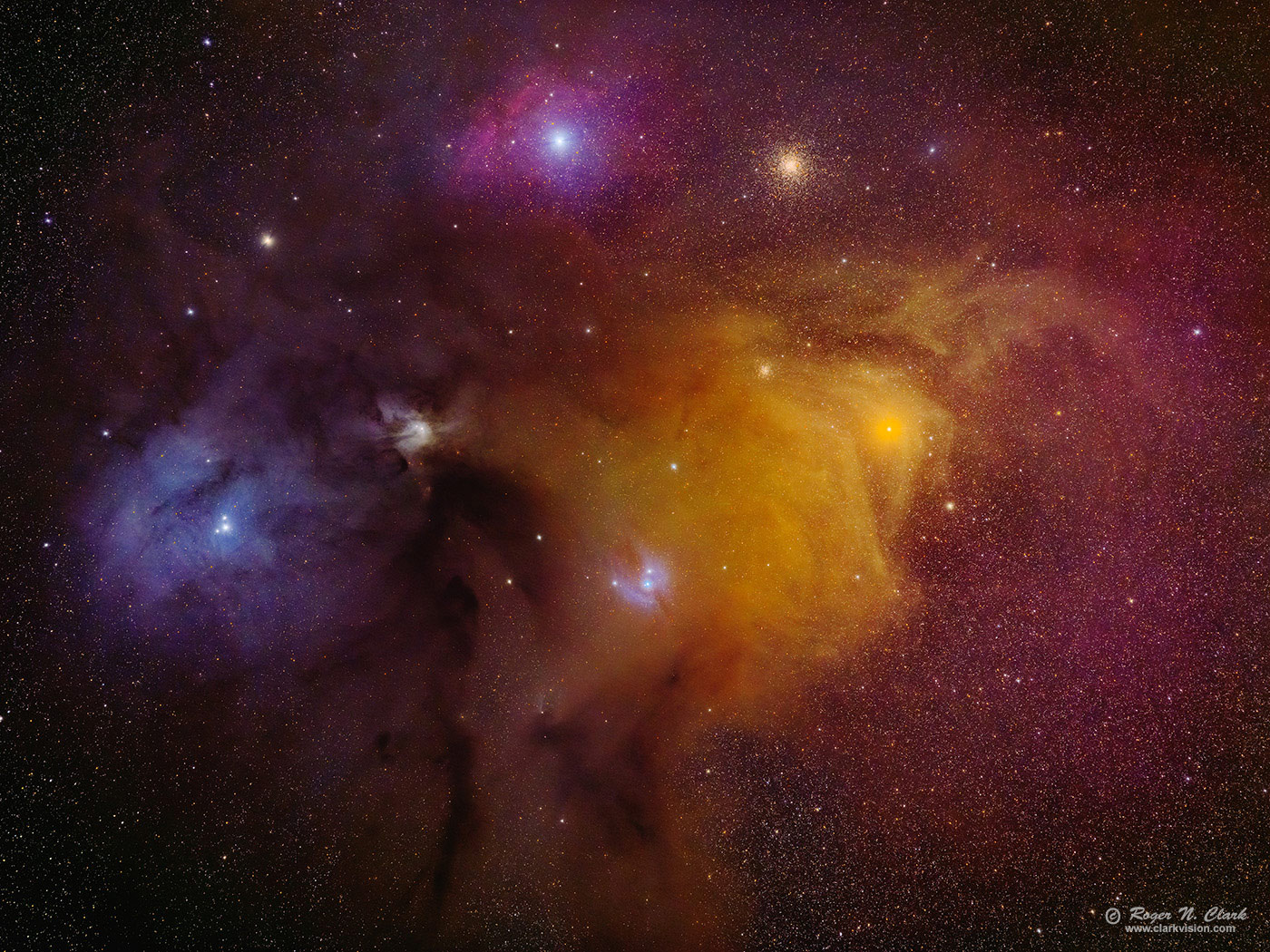
Figure 1. The Colorful Rho Ophiuchus - Antares Region in natural color
made with the simple astrophotography methods described here. To make
this image, I used a tracker with low periodic error, a stock Canon R5 mirrorless
camera, a stock camera lens. The incredible uniformity of the Canon R5 enabled
this image to be made with relatively short total exposure time and no measured calibration frames.
The R5 does very well at suppressing dark current, pattern noise is among the lowest
that I have measured, and the flat field was included in the raw converter lens profile.
This is a highly calibrated image and include the color correction matrix, color
calibrated workflow for natural color.
Gallery image with more details.
Results: Canon R5 sensor analysis
Table 1a photonstophotos derived results
---------------------------------------------------------------------
Read noise Read noise pixel gain Dynamic Read noise
iso electrons DN gain e/DN Range this study
electrons
100 4.141 1.329 1 3.116 10787 3.71
200 4.757 3.031 1 1.569 4730
400 1.248 1.602 4 0.779 8949
800 1.67 4.287 4 0.390 3344
1600 1.591 8.112 4 0.196 1767 1.52
3200 1.537 15.78 4 0.097 908
6400 1.464 28.857 4 0.051 497
12800 1.464 59.714 4 0.0245 240
25600 1.474 121.095 4 0.0122 118
51200 1.434 233.941 4 0.0061 61
Read noise values in columns 2 and 3 above are from photonstophotos.net.
Dynamic Range assumes full well in DN is 2^14 - 2048 = 14336 DN
Read noise in electrons:
photonstophotos.net input referred read noise for Canon R5
Read noise in DN:
https://www.photonstophotos.net/Charts/RN_ADU.htm#Canon%20EOS%20R5_14
Derived gain = Read noise in electrons / Read noise in DN.
Table 1b Camera Data
----------------------------------------------------------------------------
Camera introduced: 7/2020
Sensor size = 36 x 24 mm (full frame)
Pixel pitch: 4.39 microns.
Image size: 8192 x 5464 pixels = 44.8 megapixels.
Offset= 2048 at ISO 1600
-------------------------------------------------
Sensitivity
Fixed Pattern (Banding) Noise
Table 2 shows the bias noise in image form. The pattern (banding)
noise of the R5 is extremely low. I estimate the pattern noise in
bias frames is less than 0.1 electron at ISO 1600! In a typical
astrophotography scenario, measuring and stacking multiple frames,
with dithering during acquisition, pattern noise can easily be
reduced to below 0.01 electron without the use of master bias
subtraction.
| Table 2b. Apparent Read Noise, Full Image, sub-sampled |
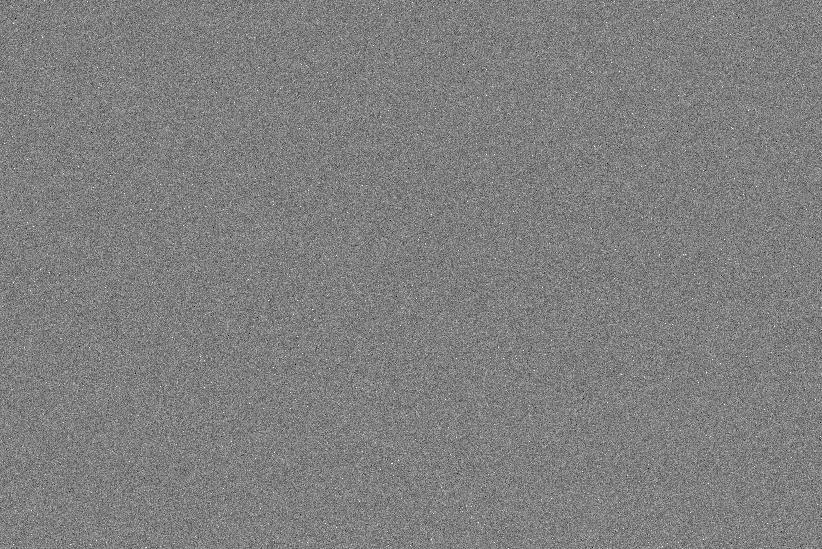 | ISO 1600
Image Range:
-10.00 to 10.00 electrons about the mean
Full image statistics:
min= 378 electrons
max= 1390 electrons
mean= 401 electrons ( 2048 DN)
standard deviation= 1.59 electrons
0 pixels =zero (0.000000%)
Pattern noise is less than about 0.1 electron!
full resolution image (14 megabytes)
|
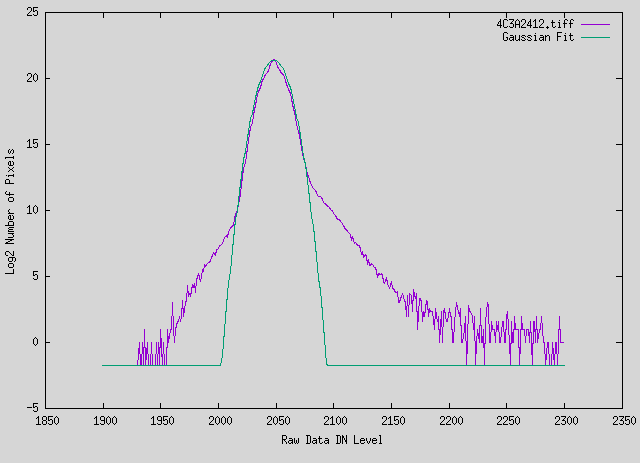
Figure 2. Log histogram plot of a Canon R5 ISO 1600 bias frame
from the ISO 1600 image in Table 2b, image 4C3A2412.tiff.
The distribution is typical for a CMOS sensor.
The minimum image pixel value is 1931 DN and the mean is 2048.
No pixels were clipped.
Stacking Fixed Pattern (Banding) Noise
The typical scenario in astrophotography is to stack images to reduce
noise, and also to dither (shift the field of view between frames
or sets of frames). To see any residual fixed pattern noise 100
bias frames were randomly dithered by up to 100 ;pixels in both
x and y directions then stacked with sigma-clipped average with
clipping set to 2.0 standard deviations. Results of the stack are
shown in Table 3.
The results of the 100 frame stack shows Incredibly low noise,
and barely any perceptible pattern noise. Note the scale of the
images: +/- 5 electrons about the mean (top image in Table 3),
and +/- 2 electrons about the mean (bottom image in Table 3).
Random noise has been reduced to 0.2 electron and pattern noise
less than about 0.02 electron! This mean that just a few photons
per pixel over 100 frames could be detected.
With such low noise in the stacked image, the tacking needs to be
done in floating point, and the stacked output needs to be floating
point if stacking linear data. That was done for this stack.
NOTE: other cameras reviewed on this site typically show the bias
frames over a +/- 20 electron range. The lower image in Table 3
is a 10 times smaller range!
| Table 3. Apparent Read Noise in 100 Frame Stacked image, Full Image, sub-sampled |
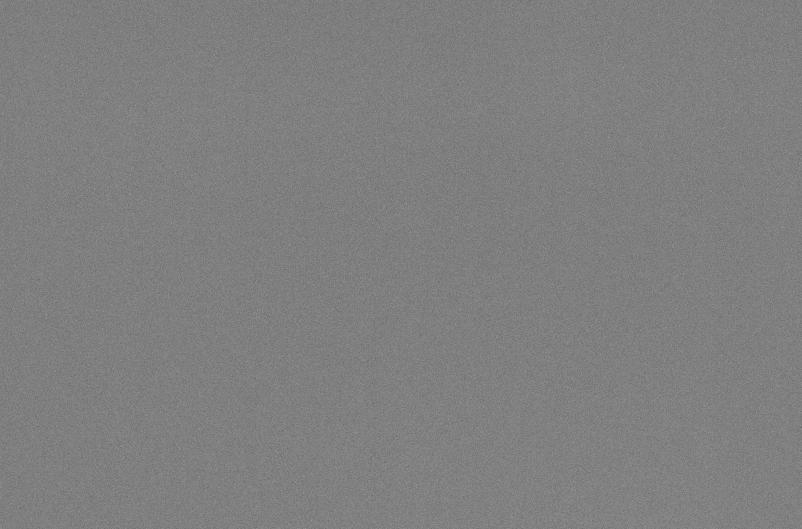 | ISO 1600
Image Range:
-5.00 to 5.00 electrons about the mean
Full image statistics:
min= 400.39 electrons
max= 402.52 electrons
mean= 401.40 electrons ( 2047.96 DN)
standard deviation= 0.20 electrons
0 pixels =zero (0.000000%)
Pattern noise is less than about 0.02 electron!
|
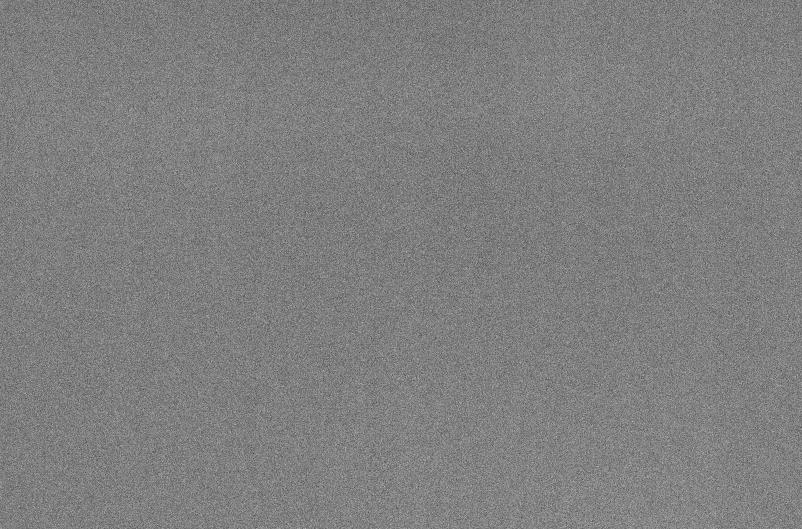 | ISO 1600
Image Range:
-2.00 to 2.00 electrons about the mean
Full image statistics:
min= 400.39 electrons
max= 402.52 electrons
mean= 401.40 electrons ( 2047.96 DN)
standard deviation= 0.20 electrons
0 pixels =zero (0.000000%)
Pattern noise is less than about 0.02 electron!
full resolution image (9.8 megabytes)
|
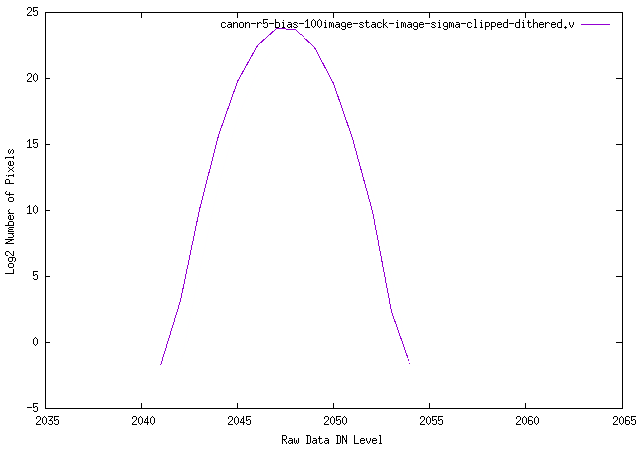
Figure 3. Log histogram plot of the stacked Canon R5 ISO 1600 image 32-bit
floating point data discussed in Table 3.
The distribution is Gaussian with no outliers and a standard deviation
of only 0.20 electron! No pixels were clipped.
Dark Current and Thermal Noise
Initial dark current measurements show that the sensor is tracking
the dark current of the Canon 7D Mark II. Dark current level
is dependent on the pixel design, but includes a component that
increases dark current with pixel area. The Canon R5 has 15%
larger area per pixel than the 7D2, so there is an improvement
of the R5 per unit area. Figure 4 shows the measured dark current
levels of the R5 along with other sensors.

Figure 4. Dark current as a function of temperature
are compared. Lower is better as noise from dark current is the
square root of the dark current multiplied by the exposure time. The
temperatures are the camera temperature reported in the camera's
EXIF data and was 2 to 10 degrees higher than measured ambient
temperature due to internal electronics heating the camera. The
more massive 1D cameras tended to have a larger difference between
internal camera and ambient temperature. The Canon 7D Mark II set
a new and impressively low levels for dark current in the 2014 era.
Reports on cloudynights.com
say the Con 80D has the same dark current level as the 7DII.
The newer Canon R5 is tracking the 7DII line.
Sony sensor data are from commercial data sheets found online.
The Sony IMX455 is a flagship 61 megapixel sensor.
The Sony IMX455 data are from Alarcon et. al., 2023, and shows a
different trend line with temperature than the Canon sensors.
Note that the IMX455 has a dark current at -10C as the Canon 7DII at +6 C,
but at temperatures higher than about 20C the IMX455 would have lower
dark current (if the trend line holds). The IMX455 was introduced
in 2023 and has 3.76 micron pixels. The IMX585 has 2.9 micron pixels.
Note that the Hubble WFC3
camera, operating at -83 C, has dark current similar to that of a
modern uncooled DSLR or mirrorless camera operating at about 0 C.
Autofocus Tracking Setup
Some Negatives
Conclusions
The Canon R5 is an incredible low light camera with very impressive low pattern noise.
Compare the incredible uniformity of the Canon R5 45 megapixel 2020 sensor to Sony's
IMX455 61 megapixel sensor of similar vintage (2019)
shown in Figure 2, top, here, Alarcon et. al., 2023. The kind of
pattern noise in the IMX455 will not be improved by dithering, so a master bias
is needed to be subtracted to fix the pattern noise. But the Canon R5 sensor
does very well with stacking and dithering and no master bias is needed.
Even without dithering, stacking bias improves noise, and derivation
of a flat field correction can be done with a flat field measurement
and a single value bias level for all pixels (2048 for ISO 1600).
See
my Canon R5 gallery for many examples illustrating what this camera can do.
Canon EOS R5 Mirrorless Digital Camera
 Click here to go to B&H Photo and Purchase the Canon EOS R5 Camera.
Click here to go to B&H Photo and Purchase the Canon EOS R5 Camera.
If you find the information on this site useful and wish to purchase the equipment
that I use to make images, please use
the links to B&H Photo to make the purchases. By using the link, you will help support
clarkvision.com at no additional cost to you. I have used B&H Photo for decades and
have always had a great experience and their prices are very good.
Please support Clarkvision; make a donation (link below).
Appendix 1
References
Alarcon et. al., 2023, Scientific CMOS Sensors in Astronomy: IMX455 and IMX411
Publications of the Astronomical Society of the Pacific 135:055001 (15pp).
https://doi.org/10.1088/1538-3873/acd04a
direct link to pdf
Notes:
DN is "Data Number." That is the number in the file for each
pixel. I'm quoting the luminance level (although red, green
and blue are almost the same in the cases I cited).
16-bit signed integer: -32768 to +32767
16-bit unsigned integer: 0 to 65535
Photoshop uses signed integers, but the 16-bit tiff is
unsigned integer (correctly read by ImagesPlus).
Procedures for performing this analysis are described in:
Procedures for Evaluating Digital Camera Noise, Dynamic Range, and Full
Well Capacities; Canon 1D Mark II Analysis
Disclosure
Roger Clark is a B&H Photo affiliate. The affiliate links to a product
simply allow the ability to buy the product for the same price as if the purchase was made through
B&H directly. By using the link you support this site and enable it to
remain active with new reviews and information. Please support this site.
http://clarkvision.com/articles/evaluation-canon-7dii
First published July 9, 2025.
Last updated July 12, 2025.






